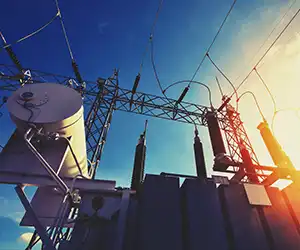Latest Electricity News - Utility Operations
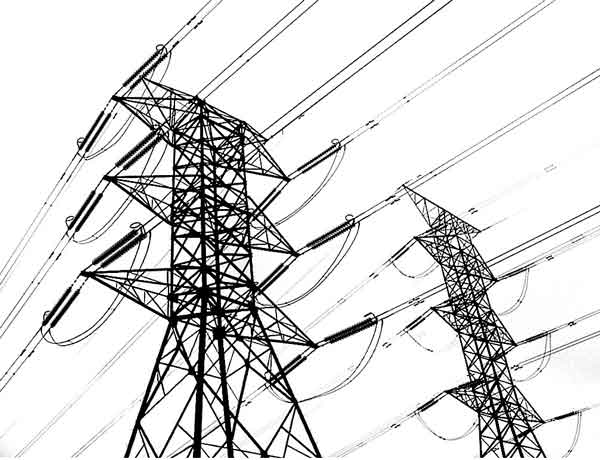
Ukraine Helps Spain Amid Blackouts
Ukraine-Spain Power Aid highlights swift international solidarity as Kyiv offers grid restoration expertise to Spain after unprecedented blackouts, aiding energy infrastructure recovery, interconnectors, and emergency response while operators restore power across Spain and Portugal.
Key Points
Ukraine sends grid experts to help Spain recover from blackouts, restore power, and reinforce energy infrastructure.
✅ Ukraine offers grid restoration expertise and emergency support.
✅ Partial power restored; cause of blackouts under investigation.
✅ EU funding and Ukrenergo bolster infrastructure resilience.
In a remarkable display of international solidarity, Ukraine has extended assistance to Spain as the country grapples with widespread power outages. On April 28, 2025, Spain and neighboring Portugal experienced unprecedented blackouts that disrupted daily life, including internet connectivity and subway operations. The two nations declared a state of emergency as they worked to restore power.
Ukraine's Offer of Assistance
In response to the crisis, Ukrainian President Volodymyr Zelensky reached out to Spanish Prime Minister Pedro Sánchez, offering support to help restore Spain's power grid. Zelensky emphasized Ukraine's extensive experience in managing energy challenges, particularly in fighting to keep the lights on during sustained Russian attacks on its energy infrastructure. He instructed Ukraine’s Energy Minister, Herman Haluschchenko, to mobilize technical experts to assist Spain swiftly. As of April 29, grid operators in both Spain and Portugal reported partial restoration of power, with recovery efforts ongoing. Authorities continue to investigate the cause of the outages.
Ukraine's Energy Crisis: A Background
Ukraine's offer of assistance is particularly poignant given its own recent struggles with energy security. Throughout 2024, Russia launched numerous aerial strikes targeting Ukraine's energy infrastructure, including strikes on western Ukraine that severely damaged power generation facilities and transmission networks. These attacks led to significant challenges during the winter season, including widespread blackouts and difficulties in heating households, prompting efforts to keep the lights on this winter across the country. Despite these adversities, Ukraine managed to navigate the winter without major power shortages, thanks to rapid repairs and the resilience of its energy sector.
International Support for Ukraine
The international community has played a crucial role in supporting Ukraine's energy sector, even as U.S. support for grid restoration has shifted, with continued aid from European partners. In July 2024, the European Union allocated nearly $110 million through the KfW Development Bank to modernize high-voltage substations and develop interconnectors with continental Europe's power system. This funding has been instrumental in repairing and restoring equipment damaged by Russian attacks and enhancing the protection of Ukraine's substations. Since the onset of the conflict, Ukraine's energy grid operator, Ukrenergo, has received international assistance totaling approximately €1.5 billion.
A Gesture of Solidarity
Ukraine's offer to assist Spain underscores the deepening ties between the two nations and reflects a broader spirit of international cooperation. While Spain continues its recovery efforts, the support from Ukraine serves as a reminder of the importance of solidarity, and of Ukraine's electricity reserves that help prevent further outages in times of crisis. As both countries work towards restoring and securing their energy infrastructures, their collaboration highlights the shared challenges and mutual support that define the European community.
Ukraine's proactive stance in offering assistance to Spain amidst the recent blackouts exemplifies the strength of international partnerships and the shared commitment to new energy solutions that overcome energy challenges. As the situation develops, the continued cooperation between nations will be pivotal in ensuring energy security and resilience as winter looms over Ukraine once more.
Related News
Sign Up for Electricity Forum’s News Service
Weekly updates from our FREE News Service—get the latest news, breakthrough technologies, and expert insights, delivered straight to your inbox.
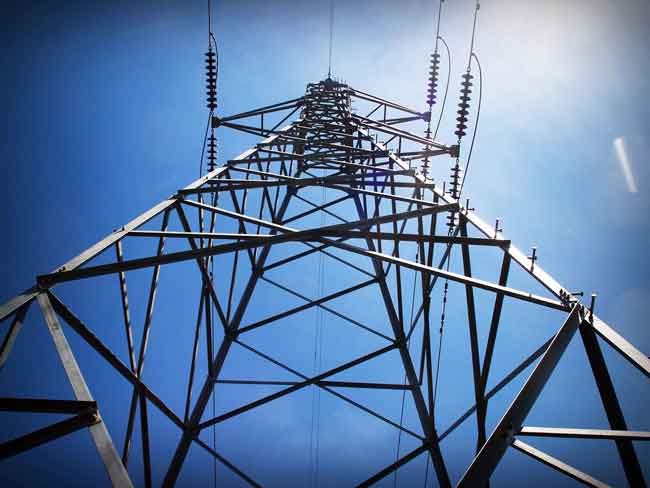
London Underground Power Outage Disrupts Rush Hour
London Underground Power Outage 2025 disrupted Tube lines citywide, with a National Grid voltage dip causing service suspensions, delays, and station closures; TfL recovery efforts spotlight infrastructure resilience, contingency planning, and commuter safety communications.
Key Points
A citywide Tube disruption on May 12, 2025, triggered by a National Grid voltage dip, exposing resilience gaps.
✅ Bakerloo, Waterloo & City, Northern suspended; Jubilee disrupted.
✅ Cause: brief National Grid fault leading to a voltage dip.
✅ TfL focuses on recovery, communication, and resilience upgrades.
On May 12, 2025, a significant power outage disrupted the London Underground during the afternoon rush hour, affecting thousands of commuters across the city. The incident highlighted vulnerabilities in the city's transport infrastructure, echoing a morning outage in London reported earlier, and raised concerns about the resilience of urban utilities.
The Outage and Its Immediate Impact
The power failure occurred around 2:30 PM, leading to widespread service suspensions and delays on several key Tube lines. The Bakerloo and Waterloo & City lines were completely halted, while the Jubilee line experienced disruptions between London Bridge and Finchley Road. The Northern line was also suspended between Euston and Kennington, as well as south of Stockwell. Additionally, Elizabeth Line services between Abbey Wood and Paddington were suspended. Some stations were closed for safety reasons due to the lack of power.
Commuters faced severe delays, with many stranded in tunnels or on platforms. The lack of information and communication added to the confusion, as passengers were left uncertain about the cause and duration of the disruptions.
Cause of the Power Failure
Transport for London (TfL) attributed the outage to a brief fault in the National Grid's transmission network. Although the fault was resolved within seconds, it caused a voltage dip that affected local distribution networks, leading to the power loss in the Underground system.
The incident underscored the fragility of the city's transport infrastructure, particularly the aging electrical and signaling systems that are vulnerable to such faults, as well as weather-driven events like a major windstorm outage that can trigger cascading failures. While backup systems exist, their capacity to handle sudden disruptions remains a concern.
Broader Implications for Urban Infrastructure
This power outage is part of a broader pattern of infrastructure challenges facing London. In March 2025, a fire at an electrical substation in Hayes led to the closure of Heathrow Airport, affecting over 200,000 passengers, while similar disruptions at BWI Airport have underscored aviation vulnerabilities. These incidents have prompted discussions about the resilience of the UK's energy and transport networks.
Experts argue that aging infrastructure, coupled with increasing demand and climate-related stresses, poses significant risks to urban operations, as seen in a North Seattle outage and in Toronto storm-related outages that tested local grids. There is a growing call for investment in modernization and diversification of energy sources to ensure reliability and sustainability.
TfL's Response and Recovery Efforts
Following the outage, TfL worked swiftly to restore services. By 11 PM, all but one line had resumed operations, with only the Elizabeth Line continuing to experience severe delays. TfL officials acknowledged the inconvenience caused to passengers and pledged to investigate the incident thoroughly, similar to the Atlanta airport blackout inquiry conducted after a major outage, to prevent future occurrences.
In the aftermath, TfL emphasized the importance of clear communication with passengers during disruptions and committed to enhancing its contingency planning and infrastructure resilience.
Public Reaction and Ongoing Concerns
The power outage sparked frustration among commuters, many of whom took to social media to express their dissatisfaction, echoing sentiments during Houston's extended outage about communication gaps and delays. Some passengers reported being trapped in tunnels for extended periods without clear guidance from staff.
The incident has reignited debates about the adequacy of London's transport infrastructure and the need for comprehensive upgrades. While TfL has initiated reviews and improvement plans, the public remains concerned about the potential for future disruptions and the city's preparedness to handle them.
The May 12 power outage serves as a stark reminder of the vulnerabilities inherent in urban infrastructure. As London continues to grow and modernize, ensuring the resilience of its transport and energy networks will be crucial. This includes investing in modern technologies, enhancing communication systems, and developing robust contingency plans to mitigate the impact of future disruptions. For now, Londoners are left reflecting on the lessons learned from this incident and hoping for a more reliable and resilient transport system in the future.
Related News
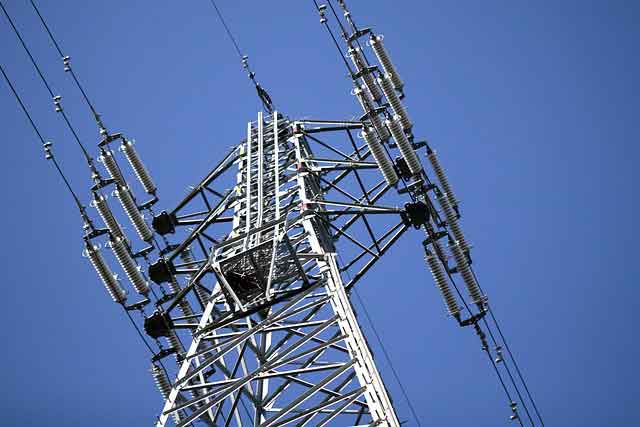
Quebec Hit by Widespread Power Outages Following Severe Windstorm
Quebec Windstorm 2025 disrupted Montreal and surrounding regions, triggering power outages, Hydro-Québec repairs, fallen trees, infrastructure damage, and transport delays, while emergency response and community resilience accelerated restoration and recovery efforts across the province.
Key Points
A severe April 29 windstorm with 100 km/h gusts caused outages, damage, and emergency recovery across Quebec.
✅ Gusts exceeded 100 km/h across Montreal and nearby regions
✅ Hydro-Québec restored power; crews cleared debris and lines
✅ Communities shared resources, shelters, and volunteer support
A powerful windstorm swept across Quebec on April 29, 2025, leaving tens of thousands of residents without electricity and causing significant damage to infrastructure. The storm's intensity disrupted daily life, leading to widespread outages across the province, fallen trees, and transportation delays.
Storm's Impact
The windstorm, characterized by gusts exceeding 100 km/h, struck various regions of Quebec, including Montreal and its surrounding areas. Hydro-Québec reported extensive power outages affecting numerous customers. The storm's ferocity led to the uprooting of trees, downing of power lines, and significant damage to buildings and vehicles.
Response and Recovery Efforts
In the aftermath, emergency services and utility companies mobilized to restore power and clear debris. Hydro-Québec crews worked tirelessly, much like Sudbury Hydro teams did in Ontario, to repair damaged infrastructure, while municipal authorities coordinated efforts to ensure public safety and facilitate the restoration process. Despite these efforts, some areas experienced prolonged outages, highlighting the storm's severity.
Community Resilience
Residents demonstrated remarkable resilience during the crisis. Many communities came together to support one another, as seen when Toronto neighborhoods rallied during lingering outages, sharing resources and providing assistance to those in need. Local shelters were set up to offer warmth and supplies to displaced individuals, and volunteers played a crucial role in the recovery process.
Lessons Learned
The storm underscored the importance of preparedness and infrastructure resilience, including vulnerabilities highlighted by a recent manhole fire affecting Hydro-Québec customers. In response, discussions have been initiated regarding the strengthening of power grids and the implementation of more robust emergency response strategies to mitigate the impact of future natural disasters.
As Quebec continues to recover, the collective efforts of its residents and emergency services serve as a testament to the province's strength and unity, even as similar strong-wind outages affect other regions, in the face of adversity.
Related News

Toronto Power Outages Persist for Hundreds After Spring Storm
Toronto Hydro Storm Outages continue after strong winds and heavy rain, with crews restoring power, clearing debris and downed lines. Safety alerts and real-time updates guide affected neighborhoods via website and social media.
Key Points
Toronto Hydro Storm Outages are weather-related power cuts; crews restore service safely and share public updates.
✅ Crews prioritize areas with severe damage and limited access
✅ Report downed power lines; keep a safe distance
✅ Check website and social media for restoration updates
In the aftermath of a powerful spring storm that swept through Toronto on Tuesday, approximately 400 customers remain without power as of Sunday. The storm, which brought strong winds and heavy rain that caused severe flooding in some areas, led to significant damage across the city, including downed trees and power lines. Toronto Hydro crews have been working tirelessly to restore service, similar to efforts by Sudbury Hydro crews in Northern Ontario, focusing on areas with the most severe damage. While many customers have had their power restored, the remaining outages are concentrated in neighborhoods where access is challenging due to debris and fallen infrastructure.
Toronto Hydro has assured residents that restoration efforts are ongoing and that they are prioritizing safety and efficiency, in step with recovery from damaging storms in Ontario across the province. The utility company has urged residents to report any downed power lines and to avoid approaching them, as they may still be live and dangerous, and notes that utilities sometimes rely on mutual aid deployments to speed restoration in large-scale events. Additionally, Toronto Hydro has been providing updates through their website and social media channels, keeping the public informed about the status of power restoration in affected areas.
The storm's impact has also led to disruptions in other services, and power outages in London disrupted morning routines for thousands earlier in the week. Some public transportation routes experienced delays due to debris on tracks, and several schools in the affected areas were temporarily closed. City officials are coordinating with various agencies to address these issues and ensure that services return to normal as quickly as possible, even as Quebec contends with widespread power outages after severe windstorms.
Residents are advised to stay updated on the situation through official channels and to exercise caution when traveling in storm-affected areas. Toronto Hydro continues to work diligently to restore power to all customers and appreciates the public's patience during this challenging time, a challenge echoed when Texas utilities struggled to restore power during Hurricane Harvey.
Related News
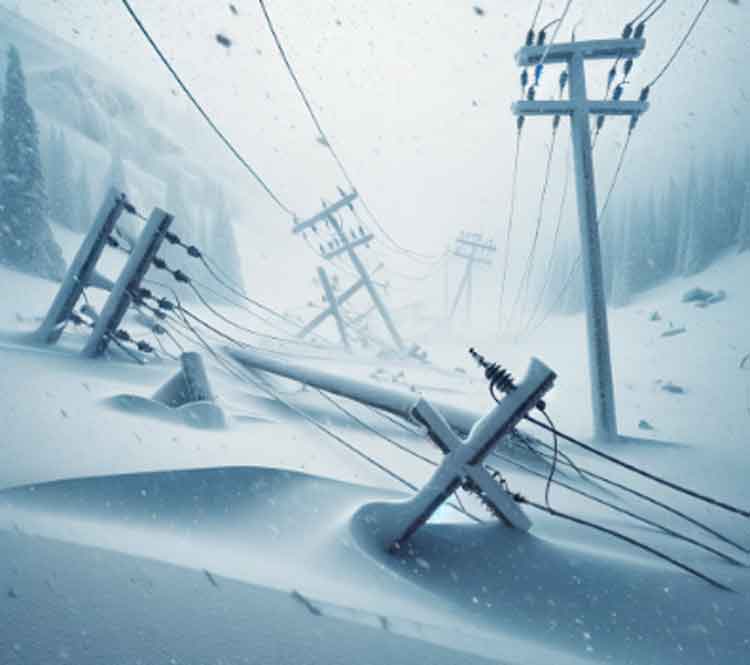
Freezing Rain Causes Widespread Power Outages in Quebec
Quebec Ice Storm 2025 disrupted power across Laurentians and Lanaudiere as freezing rain downed lines; Hydro-Qu�E9bec crews accelerated grid restoration, emergency response, and infrastructure resilience amid ongoing outages and severe weather alerts.
Key Points
Quebec Ice Storm 2025 brought freezing rain, outages, and grid damage, hitting Laurentians and Lanaudiere hardest.
✅ Peak: 62,000 Hydro-Qu�E9bec customers without electricity
✅ Most outages in Laurentians and Lanaudiere regions
✅ Crews repairing lines; restoration updates ongoing
A significant weather event struck Quebec in late March 2025, as a powerful ice storm caused widespread power outages across the province. The storm led to extensive power outages, affecting tens of thousands of residents, particularly in the Lanaudière and Laurentians regions.
Impact on Power Infrastructure
The freezing rain accumulated on power lines and vegetation, leading to numerous power outages across the network. Hydro-Québec reported that at its peak, over 62,000 customers were without electricity, with the majority of outages concentrated in the Laurentians and Lanaudière regions. By the afternoon, the number decreased to approximately 30,000, and further to just under 18,500 by late afternoon.
Comparison with Previous Storms
While the March 2025 ice storm caused significant disruptions, it was less severe compared to the catastrophic ice storm of April 2023, which left 1.1 million Hydro-Québec customers without power. Nonetheless, the 2025 storm's impact was considerable, leading to the closure of municipal facilities and posing challenges for local economies, a pattern echoed when Toronto outages persisted for hundreds after a spring storm.
Ongoing Challenges
As of April 1, 2025, some areas continued to experience power outages, and incidents such as a manhole fire left thousands without service in separate cases. Hydro-Québec and municipal authorities worked diligently to restore services and address the aftermath of the storm, while Hydro One crews restored power to more than 277,000 customers after damaging storms in Ontario. Residents were advised to stay updated through official channels for restoration timelines and safety information.
Future Preparedness
The recurrence of such severe weather events highlights the importance of robust infrastructure and emergency preparedness, as seen in BC Hydro's storm response to an 'atypical' event that demanded extensive coordination. Both utility companies and residents must remain vigilant, especially during seasons prone to unpredictable weather patterns, with local utilities like Sudbury Hydro crews working to reconnect service after regional storms.
Related News
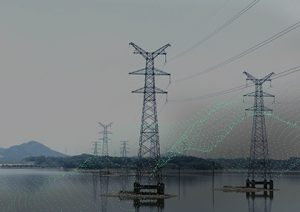
U.S. Ends Support for Ukraine’s Energy Grid Restoration
US Termination of Ukraine Energy Grid Support signals a policy shift: USAID halts aid for grid restoration amid Russia attacks, impacting energy security, infrastructure resilience, winter readiness, and negotiations leverage with Moscow and allies.
Key Points
A US policy reversal ending USAID support for Ukraine's grid, impacting energy security, resilience, and leverage.
✅ USAID halt reduces funds for grid restoration and winter prep
✅ Policy shift may weaken Kyiv's leverage in talks with Russia
✅ Ukraine seeks EU, IFIs, private capital for energy resilience
The U.S. government has recently decided to terminate its support for Ukraine's energy grid restoration, a critical initiative managed by the U.S. Agency for International Development (USAID). This decision, reported by NBC News, comes at a time when Ukraine is grappling with significant challenges to its energy infrastructure due to ongoing Russian attacks. The termination of support was reportedly finalized before Ukrainian President Volodymyr Zelensky's scheduled visit to Washington, marking a significant shift in U.S. policy and raising concerns about the broader implications for Ukraine's energy resilience and its negotiations with Russia.
The Critical Role of U.S. Support
Since Russia's invasion of Ukraine, the country’s energy infrastructure has been one of the primary targets of military strikes. Russia has launched numerous attacks on Ukraine's power generation facilities, substations, and power lines, causing power outages across multiple regions. These attacks have led to significant material losses, with damage reaching billions of dollars. As part of its commitment to Ukraine, the U.S. government, through USAID, had been instrumental in funding restoration efforts aimed at rebuilding and reinforcing Ukraine’s energy grid.
USAID's support was crucial in helping Ukraine withstand the damage inflicted by Russian missile strikes. This aid was not just about restoring basic services but also about fortifying the energy grid to ensure that Ukraine could continue functioning amidst the war and keep the lights on this winter as temperatures drop. The U.S. contribution to Ukraine's energy sector, alongside international support, helped reduce the immediate vulnerabilities faced by Ukraine's civilians and industries.
The Abrupt Change in U.S. Policy
The decision to cut support for energy grid restoration is seen as a sharp reversal in U.S. policy, particularly as the Biden administration has previously shown strong backing for Ukraine in the aftermath of the invasion. This shift in policy was reportedly made by the U.S. State Department, which directed USAID to halt its involvement in the energy sector.
According to NBC News, USAID officials expressed concern about the timing of this decision. One official noted that terminating support for Ukraine’s energy grid restoration would severely undermine the U.S. government's ability to negotiate on issues like ceasefires and peace talks with Russia. The official argued that such a move would signal to Russia that the U.S. is backing away from its long-term investments in Ukraine, potentially weakening Ukraine's position in the ongoing war.
The abrupt end to this support is also seen as a blow to the morale of Ukraine’s government and people. Ukraine had been heavily reliant on the U.S. for resources to repair its critical infrastructure, and the decision to cut this support without warning has created uncertainty about the future of such recovery efforts.
Ukraine’s Response and Search for Alternatives
In response to the termination of U.S. support, Ukrainian officials have been seeking alternative sources of funding to continue the restoration of their energy grid. Deputy Prime Minister Olha Stefanishyna reported that Ukraine has already reached preliminary agreements with other international partners to secure financial support for energy resilience, cyber defense, and recovery programs including new energy solutions for winter blackouts.
These efforts come at a time when Ukraine is working to rebuild its war-torn economy and safeguard critical sectors like energy and infrastructure. The termination of U.S. support for energy restoration projects underscores the growing pressure on Ukraine to diversify its sources of aid and not become overly dependent on any one nation. Ukrainian leaders are in ongoing talks with European governments, international financial institutions, and private investors to ensure that essential programs do not stall due to the lack of funding from the U.S., as energy cooperation grows and Ukraine helps Spain amid blackouts in solidarity.
Implications for Ukraine’s Energy Security
Ukraine's energy security remains a critical issue in the context of the ongoing conflict with Russia. The war has made the country’s energy infrastructure vulnerable to repeated attacks, and the restoration of this infrastructure is essential for ensuring that Ukraine can keep the lights on and recover in the long term. The U.S. has been one of the largest contributors to Ukraine's energy security efforts, and its withdrawal could force Ukraine to look for other partners who may not have the same level of financial or technological resources.
This development also raises questions about the future of U.S. involvement in Ukraine's recovery efforts more broadly. As the war continues and winter looms over the battlefront for frontline communities, the need for reliable and sustained support from international partners will only increase. If the U.S. significantly scales back its aid, Ukraine may face even greater challenges in maintaining its energy infrastructure and achieving long-term recovery.
Moving Forward
The termination of U.S. support for Ukraine’s energy grid restoration serves as a reminder of the complexities involved in international aid and geopolitics during wartime. As Ukraine faces the ongoing realities of the war, it must adapt to a shifting international landscape where traditional allies may not always be reliable sources of support. Ukraine’s leadership will need to be strategic in its search for alternative sources of aid, while also focusing on strengthening its energy grid, managing electricity reserves to stabilize supply, and reducing its vulnerabilities to Russian attacks.
While the end of U.S. support for Ukraine's energy restoration is a significant setback, it also underscores the urgent need for Ukraine to diversify its international partnerships. The future of Ukraine’s energy resilience may depend on how effectively it can navigate these changing dynamics while maintaining the support of the international community in the fight against Russian aggression.
Related News
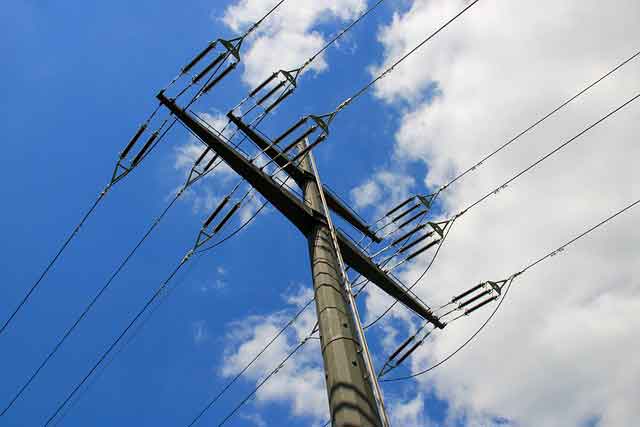
Power Outage Disrupts Morning Routine for Thousands in London
London, Ontario Power Outage disrupts the electricity grid, causing a citywide blackout, stalled commuters, dark traffic signals, and closed businesses, as London Hydro crews race restoration after a transformer malfunction and infrastructure failures.
Key Points
A blackout caused by a transformer malfunction, disrupting commuters, businesses, and traffic across London, Ontario.
✅ Traffic signals dark; delays and congestion citywide
✅ London Hydro crews repairing malfunctioning transformer
✅ Businesses closed; transit routes delayed and rerouted
A widespread power outage early Monday morning left thousands of residents in London, Ontario, without electricity, causing significant disruption for commuters and businesses at the start of the workday. The outage, which affected several neighborhoods across the city, lasted for hours, creating a chaotic morning as residents scrambled to adjust to the unexpected interruption.
The Outage Strikes
The power failure was first reported at approximately 6:30 a.m., catching many off guard as they began their day. The affected areas included several busy neighborhoods, with power lines down and substations impacted, issues that windstorms often exacerbate for utilities. Early reports indicated that the outage was caused by a combination of issues, including technical failures and possible equipment malfunctions. London Hydro, the city's primary electricity provider, responded quickly to the situation, assuring residents that crews were dispatched to restore power as soon as possible.
"Crews are on site and working hard to restore power to those affected," a spokesperson for London Hydro said. "We understand the frustration this causes and are doing everything we can to get the power back on as soon as possible."
Impact on Commuters and Businesses
The power outage had an immediate impact on the morning commute. Traffic lights across the affected areas were down, leading to delays and rush-hour disruptions at major intersections. Drivers were forced to navigate through intersections without traffic control, creating an additional layer of complexity for those trying to get to work or school.
Public transit was also affected, with some bus routes delayed due to the power loss at key transit stations. The situation added further stress to commuters already dealing with the challenges of a typical Monday morning rush.
Businesses in the affected neighborhoods faced a variety of challenges. Some were forced to close early or delay their opening hours due to a lack of electricity. Many shops and offices struggled with limited access to the internet and phone lines, which hindered their ability to process orders and serve customers. Local coffee shops, often a go-to for busy workers, were also unable to operate their coffee machines or provide basic services, forcing customers to go without their usual morning caffeine fix.
"For a lot of people, it's their first stop in the morning," said one local business owner. "It’s frustrating because we rely on power to function, and with no warning, we had to turn away customers."
The Response
As the hours ticked by, residents were left wondering when the power would return. London Hydro’s social media accounts were filled with updates, keeping residents informed about the restoration efforts, a practice echoed when BC Hydro crews responded during an atypical storm. The utility company urged those who were experiencing issues to report them online to help prioritize repair efforts.
"We are aware that many people are affected, and our teams are working tirelessly to restore power," the utility posted on Twitter. "Please stay safe, and we thank you for your patience."
Throughout the morning, the power was gradually restored to different areas of the city. However, some parts remained without electricity well into the afternoon, a situation reminiscent of extended outages that test city resilience. London Hydro confirmed that the outage was caused by a malfunctioning transformer, and the necessary repairs would take time to complete.
Long-Term Effects and Community Concerns
While the immediate effects of the outage were felt most acutely during the morning hours, some residents expressed concern about the potential long-term effects. The city’s reliance on a stable electricity grid became a focal point of discussion, with many wondering if similar outages could occur in the future, as seen in the North Seattle outage earlier this year.
"I understand that things break, but it’s frustrating that it took so long for power to come back," said a London resident. "This isn’t the first time something like this has happened, and it makes me wonder about the reliability of our infrastructure."
City officials responded by reassuring residents that efforts are underway to upgrade the city's infrastructure to prevent such outages from happening in the future. A report released by London Hydro highlighted ongoing investments in upgrading transformers and other key components of the city's power grid. Province-wide, Hydro One restored power to more than 277,000 customers after damaging storms, underscoring the scale of upgrades needed. Despite these efforts, however, experts warn that older infrastructure in some areas may still be vulnerable to failure, especially during extreme weather events or other unforeseen circumstances.
The morning outage serves as a reminder of how reliant modern cities are on stable electricity networks. While the response from London Hydro was swift and effective in restoring power, it’s clear that these types of events can cause significant disruptions to daily life. As the city moves forward, many are calling for increased investment in infrastructure and proactive measures to prevent future outages, especially after Toronto outages persisted following a spring storm in the region.
In the meantime, Londoners have adapted, finding ways to go about their day as best they can. For some, it’s a reminder of the importance of preparedness in an increasingly unpredictable world. Whether it’s an extra flashlight or a backup power source, residents are learning to expect the unexpected and be ready for whatever the next workday might bring.
Related News
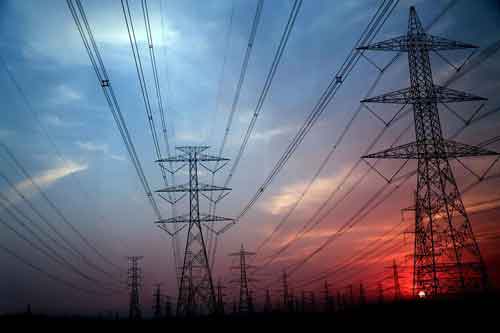
Power Outage Disrupts Travel at BWI Airport
BWI Power Outage caused flight delays, cancellations, and diversions after a downed power line near Baltimore/Washington International. BGE crews responded as terminal operations, security screening, and boarding slowed, exposing infrastructure gaps and backup power needs.
Key Points
A downed power line disrupted BWI, causing delays, diversions, and slowed operations after power was restored by noon.
✅ Downed power line near airport spurred terminal-wide disruptions
✅ 150+ delays, dozens of cancellations; diversions to nearby airports
✅ BGE response, backup power gaps highlight infrastructure resilience
On the morning of March 3, 2025, a major power outage at Baltimore/Washington International Thurgood Marshall Airport (BWI) caused significant disruptions to air travel, much like the London morning outage that upended routines, affecting both departing and incoming flights. The outage, which began around 7:40 a.m., was caused by a downed power line near the airport, according to officials from Baltimore Gas and Electric Company. Although power was restored by noon, the effects were felt for several hours, resulting in flight delays, diversions, and a temporary disruption to airport operations.
Flight Disruptions and Delays
The outage severely impacted operations at BWI, with more than 150 flights delayed and dozens more canceled. The airport, which serves as a major hub for both domestic and international travel, was thrown into chaos, similar to the Atlanta airport blackout that snarled operations, as power outages affected various critical areas, including parts of the main terminal and an adjacent parking garage. The downed power line created a ripple effect throughout the airport’s operations, delaying not only the check-in and security screening processes but also the boarding of flights. In addition to the delays, some inbound flights had to be diverted to nearby airports, further complicating an already strained travel schedule.
With the disruption affecting vital functions of the airport, passengers were advised to stay in close contact with their airlines for updated flight statuses and to prepare for longer-than-usual wait times.
Impact on Passengers
As power began to return to different parts of the terminal, airport officials reported that airlines were improvising solutions to continue the deplaning process, such as using air stairs to help passengers exit planes that were grounded due to the power outage, a reminder of how transit networks can stall during grid failures, as seen with the London Underground outage that frustrated commuters. This created further delays for passengers attempting to leave the airport or transfer to connecting flights.
Many passengers, who were left stranded in the terminal, faced long lines at ticket counters, security checkpoints, and concessions as the airport worked to recover from the loss of power, a situation mirrored during the North Seattle outage that affected thousands. The situation was compounded by the fact that while power was restored by midday, the airport still struggled to return to full operational capacity, creating significant inconvenience for travelers.
Power Restoration and Continued Delays
By around noon, officials confirmed that power had been fully restored across the main terminal. However, the full return to normalcy was far from immediate. Airport staff continued to work on clearing backlogs and assisting passengers, but the effects of the outage lingered throughout the day. Passengers were warned to expect continued delays at ticket counters, security lines, and concessions as the airport caught up with the disruption caused by the morning’s power outage.
For many travelers, the experience was a reminder of how dependent airports and airlines are on uninterrupted power to function smoothly. The disruption to BWI serves as a case study in the potential vulnerabilities of critical infrastructure that is not immune to the effects of power failure, including weather-driven events like the windstorm outages that can sever lines. Moreover, it highlights the difficulties of recovering from such incidents while managing the expectations of a large number of stranded passengers.
Investigations into the Cause of the Outage
As of the latest reports, Baltimore Gas and Electric Company (BGE) crews were still investigating the cause of the power line failure, including weather-related factors seen when strong winds in the Miami Valley knocked out power. While no definitive cause had been provided by early afternoon, BGE spokesperson Stephanie Weaver confirmed that the company was working diligently to restore service. She noted that the downed line had caused widespread disruptions to electrical service in the area, which were exacerbated by the airport’s significant reliance on a stable power supply.
BWI officials remained in close contact with BGE to monitor the situation and ensure that necessary precautions were taken to prevent further disruptions. With power largely restored by midday, focus turned to the logistical challenges of clearing the resulting delays and assisting passengers in resuming their travel plans.
Response from the Airport and Airlines
In response to the power outage, BWI officials encouraged travelers to remain patient, a familiar message during prolonged events like Houston's extended outage in recent months, and continue checking their flight statuses. Although flight tracking websites and social media posts provided timely updates, passengers were urged to expect long delays throughout the day as the airport struggled to return to full capacity.
Airlines, for their part, worked swiftly to accommodate affected passengers, although the situation created a ripple effect across the airport's operations. With delayed flights and diverted planes, air traffic control and ground crews had to adjust flight schedules accordingly, resulting in even more congestion at the airport. Airlines coordinated with the airport to prioritize urgent cases, and some flights were re-routed to other nearby airports to mitigate the strain on the terminal.
Long-Term Effects on Airport Infrastructure
This incident underscores the importance of maintaining resilient infrastructure at key transportation hubs like BWI. Airports are vital nodes in the air travel network, and any disruption, whether from power failure or other factors, can have far-reaching consequences on both domestic and international travel. Experts suggest that BWI and other major airports should consider implementing backup power systems and other safeguards to ensure that they can continue to function smoothly during unforeseen disruptions.
While BWI officials were able to resolve the situation relatively quickly, the power outage left many passengers frustrated and inconvenienced. This incident serves as a reminder of the need for airports and utilities to have robust contingency plans in place to handle emergencies and prevent delays from spiraling into more significant disruptions.
The power outage at Baltimore/Washington International Airport highlights the vulnerability of critical infrastructure to power failures and the cascading effects such disruptions can have on travel. Although power was restored by noon, the delays, diversions, and logistical challenges faced by passengers underscore the need for greater resilience in airport operations. With travel back on track, BWI and other airports will likely revisit their contingency plans to ensure that they are better prepared for future incidents that could affect air travel.
Related News
EF Partner Media
Related Articles From ET Magazine

The Role of SCADA in Grid Monitoring and Control
As electric power systems grow in complexity, the need for real-time monitoring and control has never been greater. At the center of this transformation is SCADA—Supervisory Control and Data Acquisition—a system architecture that enables utilities to collect, process, and act on data from remote field devices. From high-voltage substations to distributed energy resources (DERs), SCADA platforms are the nerve center of modern grid operations.
SCADA systems provide utilities with critical operational visibility, allowing for effective grid management, improved reliability, and faster fault detection. As demand increases for automation, decentralized energy integration, and advanced analytics, SCADA’s role continues to expand well beyond its traditional boundaries.
SCADA Architecture: Core Components and Functions
The basic architecture of a SCADA system consists of three primary layers: field devices, communication infrastructure, and the central control system. Together, these layers enable seamless remote monitoring and control of electrical assets across wide geographic areas.
Field Devices: These include Remote Terminal Units
(RTUs) and Programmable Logic Controllers (PLCs) installed at substations, transformers, and switchgear. They interface with physical equipment and sensors to collect real-time data.
Communication Layer: Data is transmitted using telemetry protocols such as DNP3, Modbus, or IEC 60870-5-104 over Ethernet, fiber optics, or radio networks.
SCADA Control Center: A central Human-Machine Interface (HMI) displays data to operators and allows manual or automatic commands to be issued. This interface connects with historian databases, alarm systems, and control logic modules.
SCADA enables grid operators to supervise power flows, manage voltage levels, and respond to equipment failures in near real-time—essential capabilities for ensuring grid stability and minimizing downtime.
SCADA vs DMS vs EMS: Understanding the Differences
While SCADA forms the backbone of real-time operations, it’s often confused with other grid management systems like DMS (Distribution Management System) and EMS (Energy Management System). Each plays a distinct role in utility operations.
SCADA focuses on data acquisition and supervisory control. It provides real-time visibility into field equipment status and telemetry.
DMS builds on SCADA by adding distribution automation, outage management, volt/VAR control, and fault location isolation and service restoration (FLISR) capabilities. It is tailored for the medium- and low-voltage distribution grid.
EMS operates at the transmission level, optimizing power generation, load forecasting, unit commitment, and economic dispatch. EMS integrates market operations and power flow analysis into the control strategy.
In many utilities, these systems are integrated into a unified control platform to provide comprehensive situational awareness and efficient grid operations from generation to distribution.
Integrating DERs into SCADA Systems
As distributed energy resources (DERs)—such as rooftop solar, wind turbines, and battery storage—proliferate, SCADA systems must evolve to manage bi-directional power flows and maintain power quality.
Modern SCADA platforms are increasingly integrated with DER Management Systems (DERMS), enabling operators to:
- Monitor generation from behind-the-meter assets
- Control inverter settings for voltage regulation
- Coordinate dispatch with grid demands
- Ensure grid synchronization and stability
To achieve this, SCADA must support open protocols, real-time communication, and dynamic data modeling to accommodate the variability and intermittency of DERs. This shift is essential for grid modernization and the transition to a decentralized energy ecosystem.
Read the full article at:
https://online.electricity-today.com/electricity-today/q2-2025/

Cybersecurity in Substation and Grid Communications
As power systems become increasingly digitized and connected, the importance of cybersecurity in substation and grid communications has grown exponentially. With the integration of intelligent electronic devices (IEDs), SCADA systems, and remote monitoring, modern substations are now part of a broader cyber-physical infrastructure. While these technologies enable real-time control and improved reliability, they also expose utilities to cyber threats that can disrupt critical services and damage essential assets.
Ensuring the cybersecurity of substation networks is no longer optional—it’s a core requirement for grid stability, national security, and compliance with regulatory standards such as NERC CIP (North American Electric Reliability Corporation Critical Infrastructure Protection).
The Cyber Threat Landscape for Electric Utilities
Substations were once isolated, but the shift to remote access, IoT sensors, and cloud-connected platforms has expanded the attack surface dramatically. Today’s threats include malware, ransomware, insider threats, and state-sponsored attacks targeting the operational technology (OT) layer.
Because substations form the backbone of the transmission and distribution (T&D) network, any cyber incident can lead to blackouts, equipment failures, or cascading effects across the grid. Moreover, attackers often seek to exploit legacy devices, poor segmentation, or insecure remote connections to move laterally within the system.
NERC CIP Compliance: A Baseline for Protection
To address these growing risks, regulatory frameworks like NERC CIP have been developed to enforce a minimum standard of protection for critical infrastructure. NERC CIP governs the cybersecurity of bulk electric system assets across the U.S. and parts of Canada.
NERC CIP requires utilities to:
- Identify and categorize critical cyber assets
- Implement access control and authentication protocols
- Maintain audit trails and perform log analysis
- Conduct vulnerability assessments and incident response planning
Ensure physical and cyber perimeter security
Although NERC CIP provides a strong compliance foundation, it must be supplemented by real-time, adaptive defenses to address evolving threats and zero-day vulnerabilities.
Real-Time Threat Detection and Network Monitoring
Modern substations must go beyond static defenses and implement real-time threat detection capabilities. This includes the deployment of intrusion detection systems (IDS), network security monitoring (NSM) tools, and behavioral analytics platforms tailored for industrial control systems (ICS).
These tools enable operators to:
- Monitor communication patterns between IEDs, RTUs, and SCADA components
- Detect anomalies such as unexpected protocol usage or lateral movement
- Set automated alerts for known attack signatures or abnormal traffic volumes
- Analyze network flows in segmented OT zones
- Enhanced network visibility is critical, particularly when dealing with IEC 61850 protocols and other substation-specific communications that differ from traditional IT systems.
In addition, time-stamped logging, centralized SIEM integration, and forensic capabilities allow security teams to trace and respond to incidents rapidly, minimizing downtime and reducing impact.
Read the full article at:
https://online.electricity-today.com/electricity-today/q2-2025/

Understanding the IEC 61850 Protocol in Substation Automation
https://online.electricity-today.com/electricity-today/q2-2025/

Understanding the IEC 61850 Protocol in Substation Automation
Electricity Today T&D Magazine Subscribe for FREE

- Timely insights from industry experts
- Practical solutions T&D engineers
- Free access to every issue
EF T&D Live Online Forums
Register for our FREE T&D Live Online Forums and join our live expert-led webinars on the latest electrical industry topics.- Industry expert insights on trending technologies
- Free access to recorded webinar presentations
- Downloadable PDF presentations
- Convenient viewing on your schedule—no attendance required







